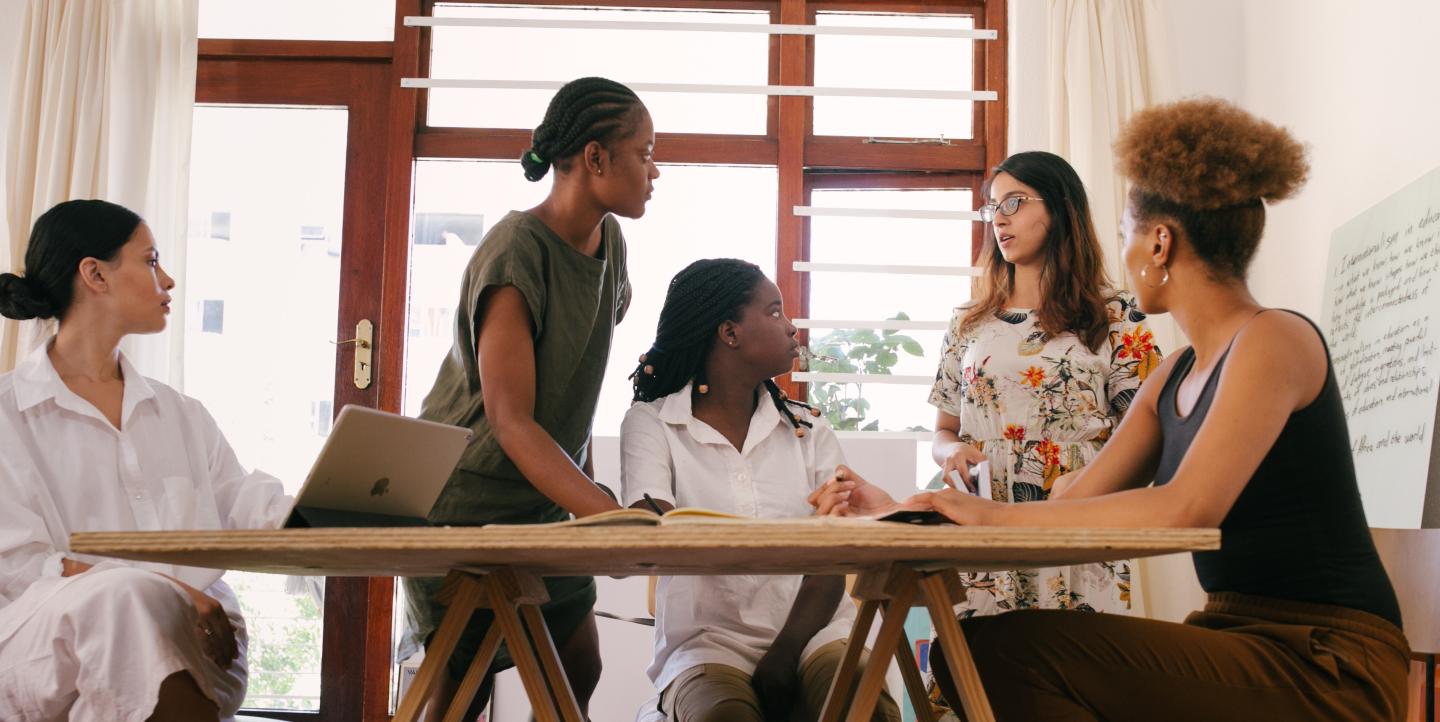As the world locks eyes on the unfathomable Russian invasion of Ukraine, the fragile engagement of news media and their audiences with the climate crisis risks being a further casualty of the war.
In a recent article in The Economist, Yuval Noah Harari, a leading thinker of our times, expressed fears that Putin’s invasion of Ukraine could undermine the global cooperation we so desperately need on big issues such as climate change. Indeed, February 27, 2022 marked the lowest level of climate coverage across the world in the last 12 months: globally, just 0.6% of all online news mentioned “climate change.”
Following the findings in our 2020 report, The Missing Perspectives of Women in COVID-19 News, that women’s voices as experts, sources or protagonists in the news were further muted during the pandemic, the international audience strategy consultancy AKAS that I co-founded a decade ago recently posed the question of how women are faring in climate news. At this crucial moment in history, are we in danger of allowing women’s voices to yet again be suppressed in news?
To answer this question, AKAS carried out a series of analyses to ascertain women’s level of representation in coverage of the climate crisis — whether as journalists, editors, experts, sources, protagonists or climate activists — and uncover how news audiences engage with the reporting.
We asked ourselves: What is women’s footprint in coverage of the climate crisis today? And, can women afford to lose any share of voice? Distressingly, the results were unsurprising.
Most climate activists and influencers are women, but the majority of the activists and influencers quoted in the news are men
Through our analysis of 59 prominent global activists and influencers on climate change issues we uncovered that the majority (53%) are women. Moreover, women make up six of the 10 most followed activists/influencers on Twitter, the top three being Alexandria Ocasio-Cortez, Greta Thunberg and Marina Silva. Women activists’ voices are in the minority in online news globally, however. Of the 10 most mentioned activists in the news, just four are women. Among them Thunberg receives the highest share of mentions, followed by Ocasio-Cortez.
According to AKAS’ analysis, women make up a sizable minority (43%) of 172 leading editors and journalists writing about climate change and the environment. However, eight of the 10 most followed editors and journalists on Twitter are men. Indeed, the top six are all men.
Does this overrepresentation of male journalists impact the coverage of the climate story in any specific way? Research has shown that globally, men’s voices dominate news coverage. The same appears to hold true for climate change: a “he said/she said” pronoun analysis of global news coverage in 2021 using the GDELT news database revealed that less than one third of all experts, sources and protagonists quoted in online climate change news coverage were women (29%).
On average, between 2017 and 2021, approximately just one in four of voices quoted in online climate change news belonged to women (27%). Emma Howard Boyd, chair of the U.K.’s Environment Agency, recently highlighted exactly this issue in a lecture, citing women’s vital role at the forefront of managing the climate crisis not being reflected or sufficiently amplified in the news.
The gender angle is almost entirely absent from climate change news coverage
AKAS’ analysis of climate change stories during the COP26 UN conference in Glasgow in November 2021 uncovered that only 2% of climate change stories contained a gender angle within them. Furthermore, the proportion of stories that touched on gender-related issues declined from 2.2% in 2017 and 2% in 2020 to just 1.4% in 2021. This suggests that in recent years, journalists’ minimal interest in covering gender aspects of the story has declined even further.
Audience engagement with the climate story is low
The long-standing challenge for climate change coverage lies in engaging audiences, most of whom do not perceive it as truly relevant to them personally. Between November 11 and December 11, 2021, in the immediate aftermath of the COP26 conference during which time more people were searching for climate change online, and its inclusion in news reporting was higher than at any point in the last five years, only 19% of 4,000 adults surveyed by AKAS in Australia, Canada, the U.K. and the U.S. reported following the story “very” or “fairly closely.” Men were following the story marginally more closely than women (16% vs. 14% in the U.S. and Canada, and 23% vs. 20% in Australia). The figures were highest in the U.K., where approximately 25% of men and women reported following the story.
This overall scant audience engagement in the story points to the news industry failing to make the story relevant to its audiences. In the view of Mitzi Jonelle Tan, a climate activist from the Philippines, this low level of engagement is also damaging to our collective ability to act on climate change. Like in the movie Don’t Look Up, the climate crisis is often framed as a problem of the future rather than “something that we’re already living with and suffering through,” Tan said — a damaging narrative she sees as reflecting the view from the global north. Not only does it fail to link the problem with audiences’ lives; it also fails to adequately reflect the perspectives of female protagonists or activists across the globe.
An important step on journalism’s path is clear:
Disrupt the existing male bias in news by using more female voices as experts, protagonists and sources in climate change coverage.
By offering more female perspectives, from both the global south and north, journalism can expand its relevance beyond its core audiences, and increase its impact as a result. AKAS’ byline analysis of the 44 highest ranked articles Google News in the U.K., U.S., Germany, France, Canada and Australia during last year’s COP26 conference found that women journalists outperformed men: 39% of the bylines in the top 10 articles belonged to women while 32% were attributed to men and 29% to organizations. Let’s see proportions more akin to that replicated across climate coverage.
Research for the article was provided by Richard Addy & AKAS.
Photo by RF._.studio from Pexels.


